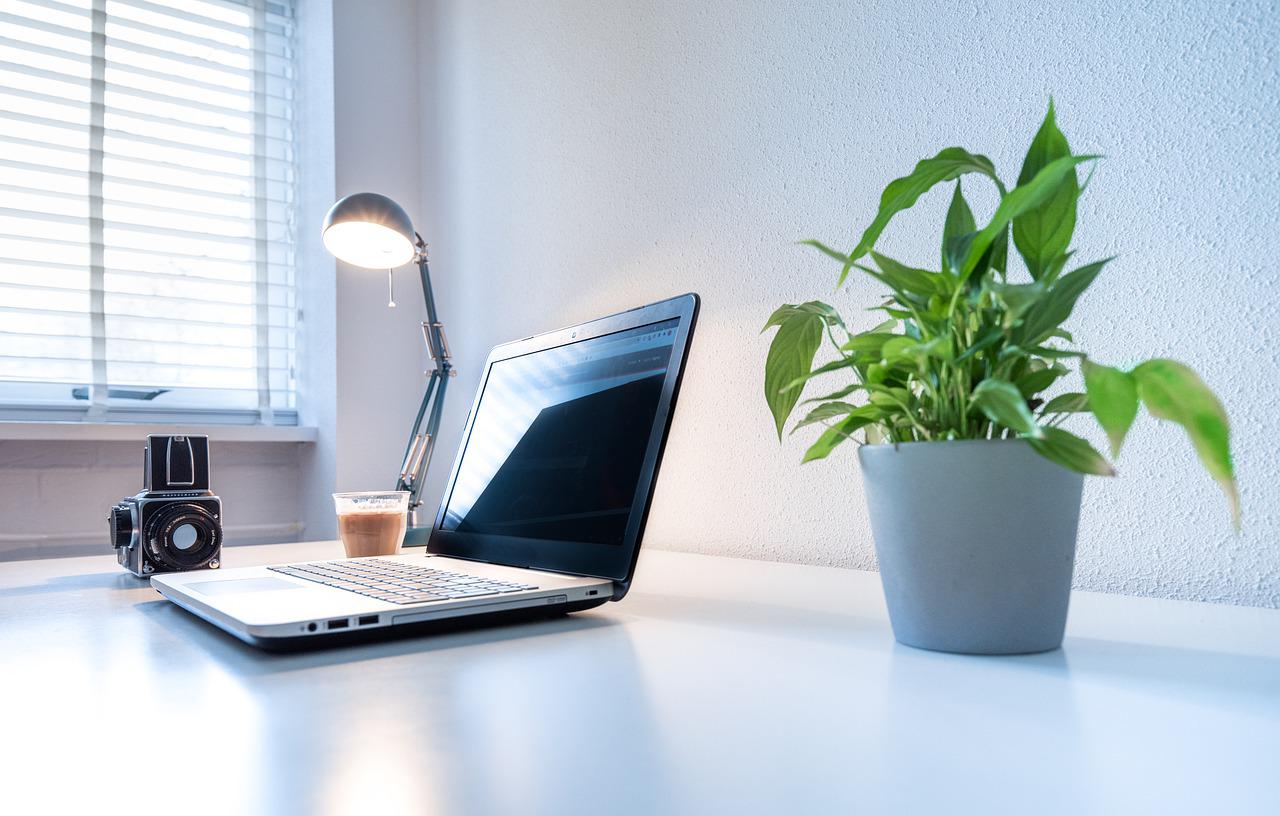Plants attract a variety of benefits that are beyond their beauty. Peldon Rose for one had conducted a survey that concluded that picking a biophilic design (introducing greenery) to your indoor space, not only increased productivity by 20% but also reduced sick days by 15%.
However, the maintenance can be off-putting. Outdoor plants aren’t normally too tricky, as there’s much more natural light when needed, and you can always use an outdoor heater to give them some warmth on a chilly day. However, meeting the requirements for indoor plants can sometimes be a challenge.
The benefits are too good to ignore, especially when it comes to the office; so it’s important to find the perfect plants to add to the workspace.
Here, we delve into five plants that work well in an office based on their low maintenance and air quality advantages.
Pothos
Pothos, otherwise known as devil’s ivy, has many advantages, one being that it can be potted in different ways. It can be placed on a desk or in a hanging pot on a wall, so if your foot traffic is high, you can hang this plant up and out of the way to ensure you’re still reaping the benefits.
Only indirect light is required for pothos, and it can even handle shade. The best position would be to hang this plant as they can grow up to eight feet a year, not to mention it will save space on your desk.
Watering pothos once a week is just enough, but make sure you only water it when the first two inches of soil are dry. At the peak of winter, you may find that you only need to water it around twice a month.
This plant is effective at removing common toxins in the air, such as formaldehyde, xylene, and carbon monoxide. According to NASA, two to three air-purifying plants in a pot size between eight to ten inches are recommended for every 100 square feet, so consider adding a lot of these around the office.
Snake plant
The snake plant can grow between six inches to eight feet tall, so consider the foot traffic in your office. That being said, these plants can handle both low light and direct sun, and they’ll do just fine in the corner of the room where it won’t take up too much space. A minimum of five hours of light is needed for them to grow properly, so consider a corner near a window.
The soil needs to completely dry out in between watering for the snake plant, making it the perfect plant for busy office workers who may be forgetful when it comes to care. Watering is required every two weeks, and in winter, this can reduce to once a month if the soil isn’t dry after a fortnight.
Yet another benefit is that this plant can filter indoor air and has the ability to convert carbon dioxide into oxygen at night while you’re away from the office.
Chinese evergreen
Chinese evergreen plants do well in medium to low light conditions or indirect sunlight, so it makes for the perfect desk plant if you’re cooped up in a dark corner in the office. However, this plant does prefer a warm temperature and won’t thrive if it is in an environment under 16 degrees, so keep it away from any air conditioning.
With the plant on your desk, you’re unlikely to forget to care for it – but remember that watering is needed every seven to ten days and every fortnight when winter arrives.
Chinese evergreen is a NASA-recommended air-purifying plant, as it emits a high amount of oxygen and can purify a space of toxins like benzene, making it a top pick for the office.
Spider plants
Spider plants will spruce up your space, and you’ll only need to water these around once a week, but only do so when the top two inches are dry. You can even use your water bottle for this, as it won’t require a large quantity, and it’s likely you’ll have one handy on your desk.
Medium light is best for spider plants and direct sunlight should be avoided, so your desk is the perfect home for this to maintain its growth.
The office’s air quality will improve with spider plants too, as it eliminates toxins like formaldehyde and xylene.
Peace lilies
Peace lilies are bound to brighten up the office. East-facing windows are the best home for peace lilies in your office, but north facing will also keep the plant happy. A minimum of ten hours in a well-lit spot will allow your plant to thrive, but direct sun will dry out the plant, so keep this in mind. Additionally, they won’t be too fond of a cold draft, so ensure the window stays closed and there’s no air conditioning close by.
Consistency is necessary for peace lilies, so watering every week to keep the soil moist is important. One of the great things about this plant is that it will communicate when it needs watering as the leaves will droop, so if you do notice this, be sure to check on the soil and add some water if it feels dry.
By adding this into the office, the air will be purified, as it is capable of eliminating 60% of pollutants, like carbon monoxide.
Rubber tree plant
If your office needs something to make a statement, a rubber plant, or ficus elastica, will do the trick. This plant works best for offices with low foot traffic, as it can grow up to 10 metres tall, so it could get in the way slightly if you don’t have much space.
While a rubber plant will work best in medium to bright indirect light, it can also manage direct sunlight – but positioning it near a south-facing window along with blinds will be the best location in the office.
Just a moderate amount of water is needed for a rubber plant but be sure to keep the soil consistently moist. In the warmer months, you should water your plant every seven to ten days to keep it moist and avoid it from getting soggy – but this can be every two to three weeks in winter.
Rubber plants will also absorb carbon dioxide and turn this into oxygen to help purify the air.
Finding the perfect plant for your office space is easier than you might think, and just one of these will brighten up your workspace instantly.







